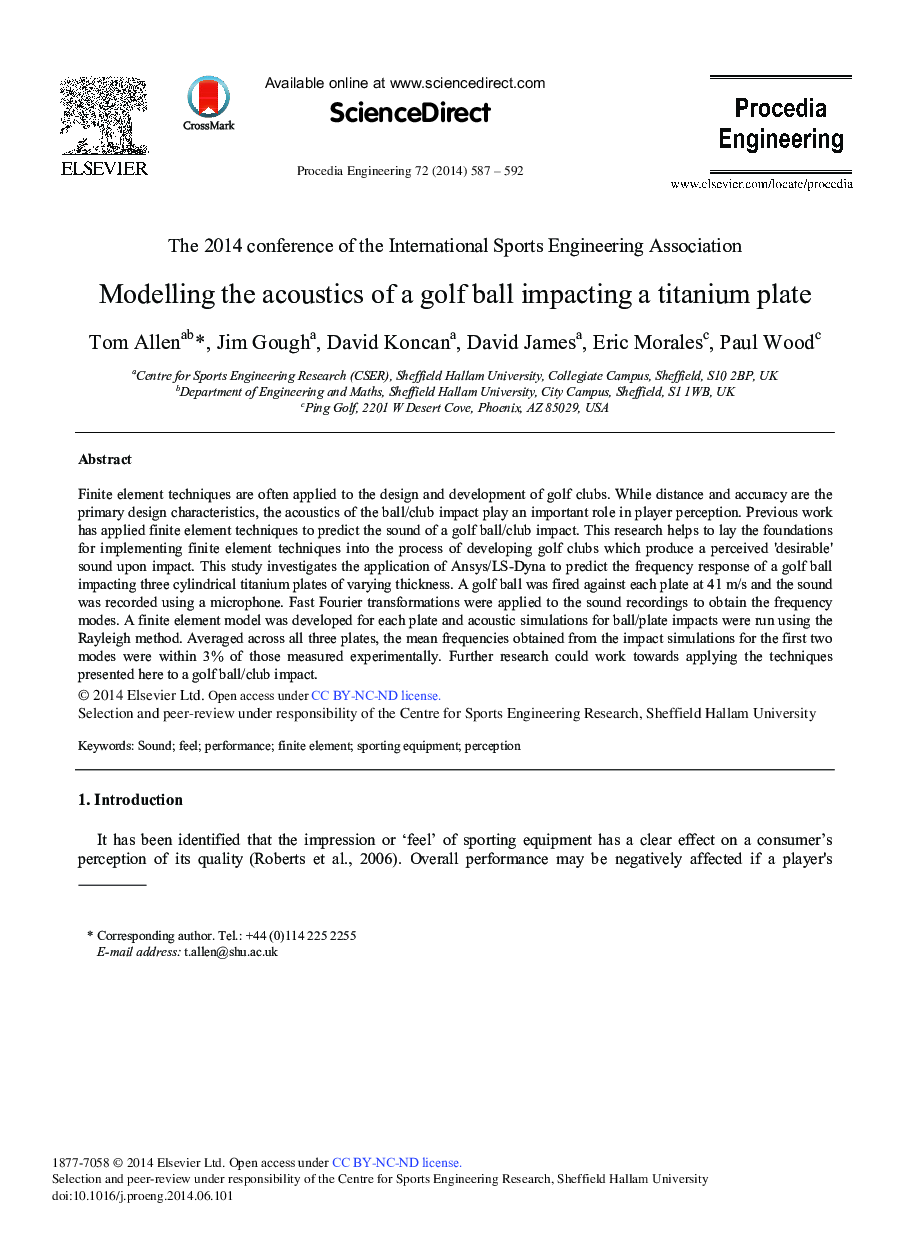| Article ID | Journal | Published Year | Pages | File Type |
|---|---|---|---|---|
| 859014 | Procedia Engineering | 2014 | 6 Pages |
Finite element techniques are often applied to the design and development of golf clubs. While distance and accuracy are the primary design characteristics, the acoustics of the ball/club impact play an important role in player perception. Previous work has applied finite element techniques to predict the sound of a golf ball/club impact. This research helps to lay the foundations for implementing finite element techniques into the process of developing golf clubs which produce a perceived ‘desirable’ sound upon impact. This study investigates the application of Ansys/LS-Dyna to predict the frequency response of a golf ball impacting three cylindrical titanium plates of varying thickness. A golf ball was fired against each plate at 41 m/s and the sound was recorded using a microphone. Fast Fourier transformations were applied to the sound recordings to obtain the frequency modes. A finite element model was developed for each plate and acoustic simulations for ball/plate impacts were run using the Rayleigh method. Averaged across all three plates, the mean frequencies obtained from the impact simulations for the first two modes were within 3% of those measured experimentally. Further research could work towards applying the techniques presented here to a golf ball/club impact.
